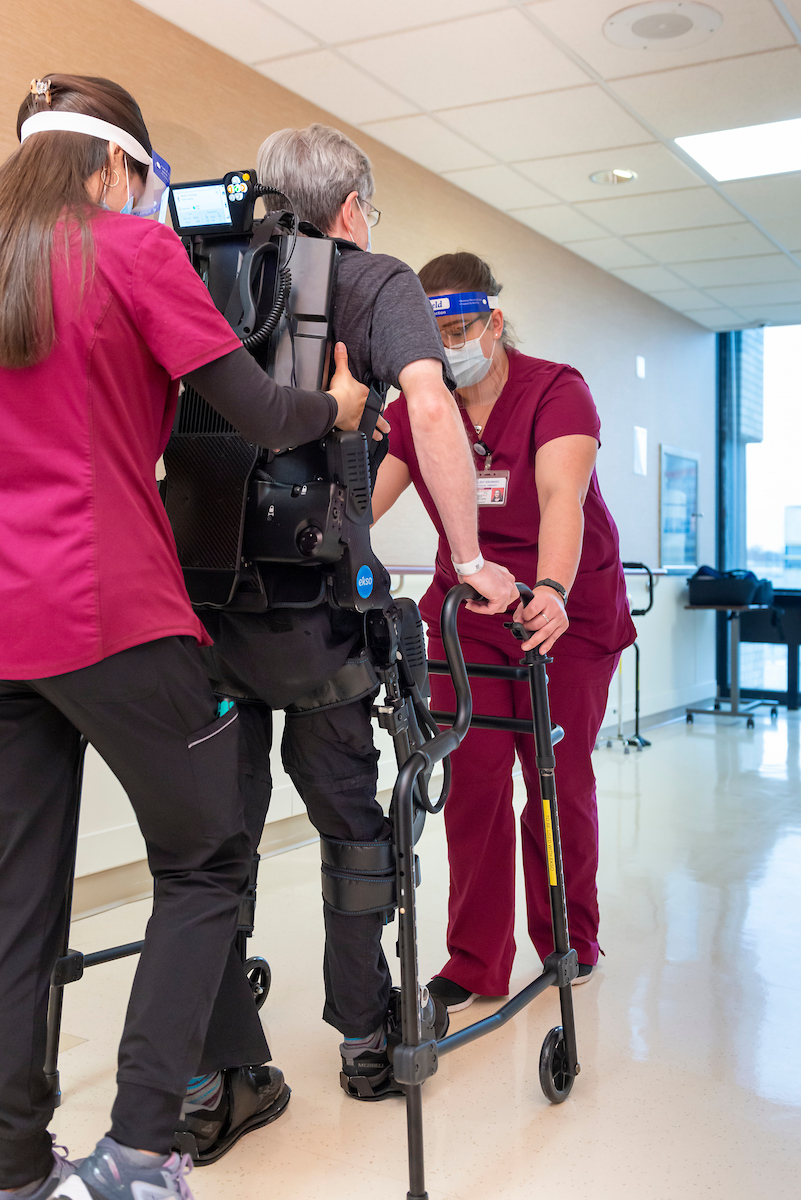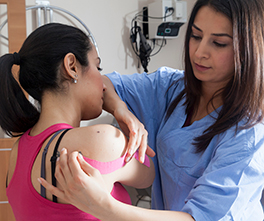David MacDonald loves being outdoors, enjoying nature and spending time with his family. One of his favorite things is hiking in the woods and hills of Western Connecticut.
Recently, however, MacDonald wondered if he’d ever enjoy these things the same way after he suffered a stroke and was rushed to the Hartford Hospital emergency room. Unable to move his left arm and leg, he knew that he had a long road to recovery ahead of him, a road that began when he was transferred to the hospital’s Inpatient Rehabilitation Unit (IRU), a 26-bed unit that provides specialized physical, occupational and speech therapy to those who have suffered a major illness or injury.

During his two-week stay, MacDonald worked with the unit’s doctors, therapists and nurses to regain his function and motor skills, which included teaching his body to walk again.
“The staff was incredible here and always pushed me, in a good way, to keep working and reach my goals,” MacDonald said.
Assisting him on his rehab journey was the unit’s new EksoNR device, a wearable robotic exoskeleton designed to help patients with stroke, traumatic spinal cord and acquired brain injuries relearn to walk by correcting step patterns, assisting with proper weight shifting and improving posture. The device, which the IRU was able to acquire through a grant from the Hartford Hospital Auxiliary, is one of only three available in the state and is the only one that is currently being used in an inpatient rehab setting.
“Recovering the ability to walk is often the patient’s number one goal after an injury,” said Shantel Szymanski, Neurological Rehabilitation Program Manager for Hartford HealthCare Rehabilitation Network. “The therapists on the IRU are very excited to use this innovative tool to get people up and walking earlier and further, and help them achieve their goals.”
“The Ekso device offers many unique benefits to our patients who are relearning to walk after a stroke as the device helps promote early mobilization and can help improve gait speed and distance, which are critical factors for optimal recovery,” added Dr. David Monti, Medical Director of the Inpatient Rehabilitation Unit. “We feel very fortunate to be able to offer this technology to our patients and it certainly helps position us further as the leading option for inpatient rehabilitation in the area.”
After two weeks on the unit, MacDonald was finally cleared to go home, something he said would never have been possible without the expert care he received from the IRU’s staff and from utilizing technology like the Ekso device.
“I am looking forward to getting back to doing what I love and am grateful for the care I got here,” he said. “I can now see the light at the end of the tunnel and I know that I can get back to normal again. If I ever need inpatient rehab again, I will insist on coming here!”


